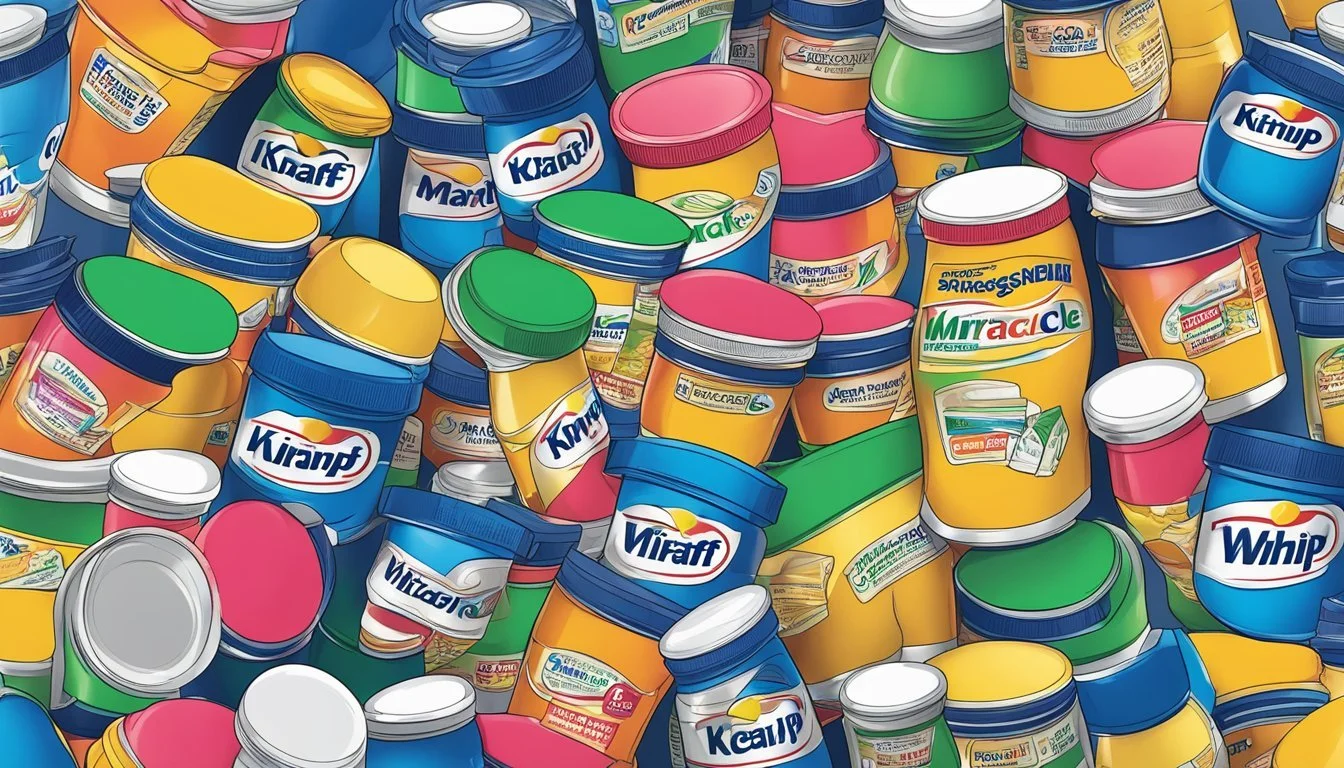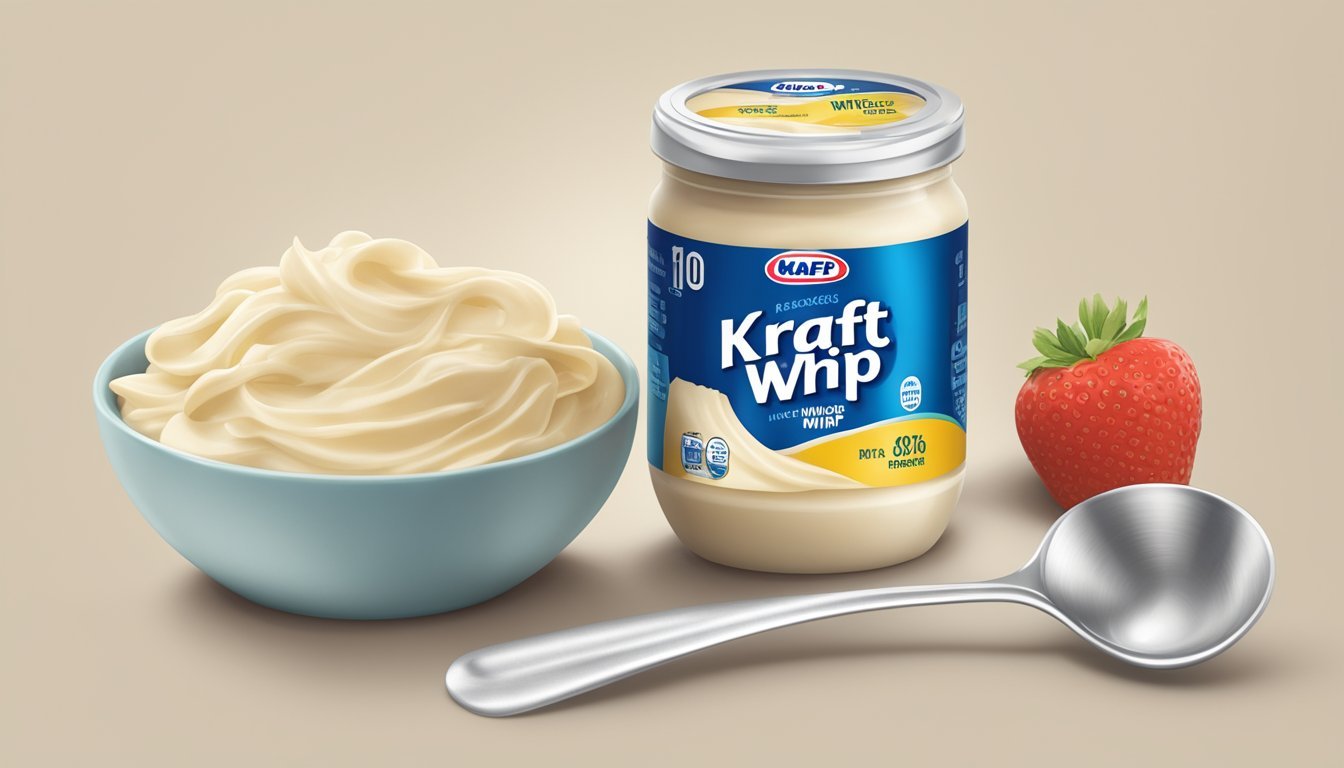How Much Kraft Miracle Whip Per Day Is Too Much?
Understanding Daily Limits
When considering the consumption of condiments such as Kraft Miracle Whip, moderation is key to maintaining a balanced diet. Kraft Miracle Whip is a popular dressing that has found its way onto sandwiches and into salads across many households. It is often chosen as an alternative to mayonnaise due to its lower calorie and fat content. A single tablespoon serving of Miracle Whip contains approximately 40 calories, with 3.5 grams of fat—of which only 0.5 grams are saturated fat. In comparison to traditional mayonnaise, which typically contains around 90 calories and 10 grams of fat per tablespoon, Miracle Whip offers a lighter option.
However, it is crucial to understand that while Miracle Whip is lower in calories and fat than mayonnaise, these numbers can quickly add up depending on portion sizes and frequency of use. The dressing’s caloric contribution mainly comes from fats, as it does not contain trans fat, but does have a small amount of saturated fat. The recommended daily limits for fat, especially saturated fat, should be taken into account when integrating Miracle Whip into one’s daily food intake. Dieticians often advise that the total fat intake should not exceed 20-35% of daily calories, with saturated fats comprising less than 10% of that number.
Determining how much Kraft Miracle Whip per day is 'too much’ largely depends on individual dietary needs and overall consumption patterns. It's essential for individuals to monitor their intake and consider the condiment as part of their total daily caloric and fat consumption to make informed dietary choices. Indulging in Miracle Whip should be balanced with other food choices to ensure a diverse and nutritious diet.
Nutritional Profile of Kraft Miracle Whip
Kraft Miracle Whip is a popular dressing with a distinct flavor profile and nutritional composition. This section details the caloric content, macronutrient breakdown, and vitamin and mineral content of this condiment.
Caloric Content
Kraft Miracle Whip contains approximately 40 calories per tablespoon (15 ml) serving. Since individuals often consume dressings in small amounts, the total daily caloric impact of Miracle Whip is generally low unless consumed in large quantities.
Macronutrient Breakdown
Total Fat: Approximately 3.5 grams per tablespoon, constituting about 80% of the total calorie content.
Saturated Fat: Roughly 0.5 grams, which is 3% of the recommended daily intake.
Trans Fat: 0 grams, indicating no presence of this unhealthy fat.
Carbohydrates: Around 2 grams per tablespoon, accounting for 20% of the calories.
Sugar: A small amount is present, contributing to the carbohydrate total.
Protein: Miracle Whip contains virtually no protein, with a negligible amount per serving.
Vitamins and Minerals
The product does not contribute significantly to daily vitamin and mineral needs. It may contain small amounts of vitamins and minerals such as Vitamin E and potassium, but generally, it should not be relied upon for nutritional supplementation. Sodium content is worth noting for those monitoring their salt intake, although the exact amount was not provided in the search results.
Recommended Serving Sizes
When considering the appropriate amount of Miracle Whip to consume, one should understand how its serving size compares to other common dressings to make informed dietary choices.
Miracle Whip vs. Other Dressings
Miracle Whip: A standard serving size for Miracle Whip is 1 tablespoon (about 15 grams), which typically contains 40 calories and 3.5 grams of fat. This constitutes 4% of the daily value (DV) for total fat based on a 2,000-calorie diet.
Ranch Dressing: Ranch dressing usually has a serving size of 2 tablespoons, which can provide around 140 calories and 14 grams of fat. This is substantially higher in calories and fat compared to Miracle Whip.
Italian Dressing: Lighter than ranch, Italian dressing's serving size is also 2 tablespoons but often contains fewer calories, approximately 60-70 calories, with a variable fat content depending on whether it's a regular or low-fat version.
Balsamic Vinegar Dressing: Balsamic vinegar dressing, for a similar 2 tablespoons, generally contributes 90 calories with 4 to 6 grams of fat, making it a middle-ground option.
French Salad Dressing: Typically, French dressing has around 140 calories and 13 grams of fat per 2 tablespoons, akin to ranch dressing's nutritional profile.
Caesar Dressing: A serving size of 2 tablespoons of Caesar dressing usually contains about 160 calories and 17 grams of fat, making it one of the higher-calorie dressings.
Normal dressings like ranch, Caesar, or French provide more calories and fat per serving compared to Miracle Whip, but dressings like Italian or balsamic vinegar often contain fewer calories.
Note: It's important to consider the DV for fats and calories provided on nutritional labels to ensure dietary choices align with individual health goals and dietary recommendations. The generally accepted 2000 calorie diet is utilized to calculate DV percentages; however, individual caloric needs may vary.
Health Considerations
When considering the daily consumption of Kraft Miracle Whip, it is important to assess the product's impact on health in relation to saturated fat and cholesterol, sodium intake, added sugars, and implications for weight management.
Saturated Fat and Cholesterol
Miracle Whip contains saturated fat. One tablespoon of regular Miracle Whip has 0.5 grams of saturated fat, making up 3 percent of the recommended daily limit based on a 2,000-calorie diet. The product has no trans fat. For individuals monitoring their cholesterol levels, Miracle Whip is lower in cholesterol than full-fat mayonnaise.
Sodium Intake
Concerning sodium, Kraft Miracle Whip can contribute significantly to daily intake levels. Consumers should be aware that one tablespoon of Miracle Whip contains a certain amount of sodium, and excessive consumption can lead to surpassing the recommended daily limit.
Added Sugars
Miracle Whip includes added sugars, which can impact blood sugar levels and contribute to caloric intake. Those who are watching their sugar intake for dietary reasons should consider the added sugars in Miracle Whip as part of their daily consumption.
Weight Management
For individuals interested in weight management or weight loss efforts, the calorie content of Miracle Whip should be taken into account. A tablespoon of the original version contains 40 calories with 3.5 grams of total fat, while the light version contains fewer calories. Incorporating Miracle Whip into a diet regimen should be done considering its nutritional values and how it fits into one's overall strategy for maintaining a healthy weight.
How Much is Too Much?
When it comes to consuming Kraft Miracle Whip, it's important for individuals to be mindful of their daily intake in relation to the Daily Values (DVs) set for various nutrients. The aim is to maintain a balanced diet that supports health without exceeding recommended limits.
Exceeding Daily Values
Miracle Whip, with its 40 calories and 3.5 grams of fat per tablespoon, can quickly add up if used liberally. The FDA's Daily Value recommendations suggest that the total fat intake should not exceed 78 grams for someone consuming a 2,000-calorie diet. Therefore, the use of Miracle Whip should be moderated to ensure it doesn't lead to an intake of fat beyond the recommended 78 grams, or 30% of total daily calories from fat.
Saturated Fat: Each tablespoon contains 0.5 grams of saturated fat, which is about 3% of the DV, with the maximum recommended limit being 20 grams per day.
A person should aim not to surpass these values, particularly if they are on a diet regimen focused on weight management or if they are monitoring their intake for health reasons.
Miracle Whip in Diet Plans
In the context of diet plans, especially for those with weight loss efforts, Miracle Whip can still fit into one's program when used judiciously. The product's lower calorie content in comparison to full-fat mayonnaise makes it a more suitable option for calorie-conscious individuals. However, it is crucial that one counts these calories towards their daily total to ensure they remain within their caloric goals.
Moderation: Incorporating Miracle Whip into meals should be done with consideration of one's overall dietary fat intake for the day.
Consider Alternatives: For those strictly monitoring their fat and calorie consumption, they might opt to use even lower-calorie alternatives or reduce the portion size of Miracle Whip.
Miracle Whip can be part of a balanced diet when individuals are aware of their DVs and how a serving of the condiment fits into their personalized diet regimen.
Alternative Options
When considering the daily intake of Kraft Miracle Whip, one should be aware of the alternative options available. These alternatives may offer lower fat content or more natural ingredients, which can be beneficial for those monitoring their daily fat intake.
Lower-Fat Dressings
Consumers looking for lower-fat options might choose dressings labeled as "light" or "reduced-fat." Such alternatives often contain less fat and fewer calories compared to traditional spreads and dressings. For instance, a lower-fat French salad dressing can serve as a flavorful yet lighter substitute.
Examples of Lower-Fat Dressings:
Light French salad dressing: Lower in total fat and saturated fat.
Reduced-fat ranch dressing: Contains fewer calories and less fat while maintaining a creamy texture.
Homemade Alternatives
Making dressings at home allows for complete control over the ingredients used. One can adjust the levels of total fat, saturated fat, polyunsaturated fat, and monounsaturated fat according to their nutritional preferences or dietary needs. For instance, a homemade ranch dressing can be crafted using low-fat mayonnaise or yogurt as a base, reducing the overall fat content.
Ingredients for Homemade Ranch Dressing:
Herbs (dill, parsley, chives)
Spices (garlic powder, onion powder)
Low-fat milk or buttermilk (to achieve desired consistency)
Natural Dressing Varieties
Natural dressings are often made with simple, non-processed ingredients and can include a variety of dressings from different culinary traditions. For example, Village Garden Italian dressing is known for its use of heart-healthy oils like olive oil, which is high in monounsaturated fats and can be a better option than dressings high in saturated fats.
Characteristics of Natural Dressing Varieties:
Made with olive oil, rich in monounsaturated fats.
Free from artificial preservatives and additives.
Can include a range of flavors from tangy vinegars to robust herbs and spices.
Reading Food Labels
When assessing how much Kraft Miracle Whip one should consume daily, the savvy consumer turns their attention to reading food labels. The nutrition facts section on a product label provides essential insights into the caloric content, fat, carbohydrates, and protein per serving. It is a valuable tool for managing intake and adhering to dietary recommendations.
Key components to look out for include:
Calories: This indicates the energy provided by a serving. Miracle Whip Original, for example, contains about 40 calories per tablespoon.
Fats: Labels break this down into saturated and unsaturated fats. They also list trans fats, which are generally best avoided.
Carbohydrates: This section clarifies the amount of sugars and fiber included.
How to use food database apps and calorie counters:
Locate an app or download a program from a reliable provider.
Input or search for "Kraft Miracle Whip". Many databases already have known products logged for convenience.
With food labels and technology at one's disposal, individuals can make informed choices relevant to their unique nutritional needs. When considering Miracle Whip, ingesting more than the suggested serving size may lead to excessive calorie consumption, especially since the dressing is calorie-dense.
Consumers mindful of their daily intake requirements can keep track by noting the specifics on such labels. Armed with the information that food labels provide and leveraging an app or a digital calorie counter, one can confidently gauge how much Miracle Whip fits into their daily dietary framework.
Additional Resources
When determining how much Kraft Miracle Whip per day is too much, one can leverage technology and community support to track intake and gain insights. Below are specific resources that provide tools for tracking nutritional information and offer platforms for discussion and advice.
Mobile Applications for Tracking
Several mobile applications serve as food databases and calorie counters, helping individuals monitor their daily consumption of products like Kraft Miracle Whip. A popular app choice is MyFitnessPal, which includes a vast food database that allows users to log food intake, track nutrients, and set personalized goals. Users can simply search for Kraft Miracle Whip in the app to find its calorie content and add it to their daily diary.
Another effective app is Lose It!, which is designed with a user-friendly interface for tracking calories and nutrients. This app also features a barcode scanner, making it easier to log specific food items such as Miracle Whip. Both apps encourage users to stay within their calorie goals to maintain or achieve their desired weight.
Online Communities and Forums
Online forums act as platforms where users can engage with others on topics such as Miracle Whip consumption. MyFitnessPal Community is a robust forum where members share experiences, challenges, and solutions, including how much Miracle Whip may fit into a balanced diet. It fosters a supportive environment where users can ask questions and receive feedback from peers.
Another resource is SparkPeople, which offers an active community alongside its calorie counter tools. The forums on SparkPeople allow members to discuss dietary choices and get advice on portion control for products like Miracle Whip.
Both resources offer users the chance to connect with others for support and information exchange, which can be invaluable when making informed food choices.








